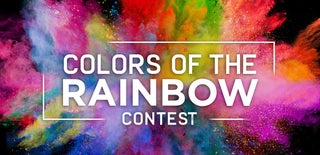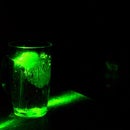Introduction: Photography Light Box With Color Control
A lightbox is a device used in photography to control how how white the light falling on an object is.
Most lightbox plans I've seen on the internet rely on natural light or white artificial lighting such as from light bulbs, fluorescent lamps, and LEDs. For most purposes, that would be enough, but this is Instructables. This means we can do a bit more ;).
So for this Instructable, we will go through how to make a lightbox whose colour output can be controlled. This also leaves us with the option to control not only the colour, but also the type of white light (which will be covered in another Instructable)
Step 1: Building the Box Version: Parts
Tools needed:
- Ruler
- Scissors
- Box cutter
- Glue
- Soldering iron
- Soldering lead
- Ribbon wires with 4 wires (AliExpress)
- Kapton tape (AliExpress)
Light box
- Box. I had a 20 cm x 30 cm x 30 cm corrugated box
- Aluminum foil
- RGB LED strip. I purchased a 5-m roll. with a remote and power/controller box (AliExpress)
Additional parts for while light control are (for next project)
- Arduino (used an Uno for testing, and a Pro Mini for the final build)
- Three logic-level N-channel mosfets (AliExpress)
- Four potentiometers. I used rotary potentiometers. (AliExpress)
- OLED display (AliExpress)
- Rotary encoder (AliExpress)
Step 2: Building the Box Version: External Box
Before anything else, please see the pictures for additional information.
The external box is where the LED strip will be connected. The following properties are needed for the interior of the box:
- It has to emit light. This is where the LED strips come in.
- It has to start dispersing the light. This is achieved by covering the interior of the box with aluminum foil. The foil's dull side is used for better dispersion of light.
The box can be of any size, and the amount of foil and the number of LED strips used from the roll will follow accordingly.
The foil needs to cover the three sides where the LED strips will be attached. The fourth side, which will be the bottom of the lightbox, does not need any foil covering.
To save on LEDs, you can cut strips long enough to go around three sides of the box, where the foil is laid. Two to three strips are enough for this project.
To prevent shorts in soldering, place Kapton tape as shown in the relevant image.
Once the testing is complete, you may move on to the next step.
Step 3: Building the Box Version: Internal Box
Before anything else, please see the pictures for additional information.
The internal box is where the stage and light diffusers are located.
The stage is where the object to be photographed is placed. The light diffusers are just white translucent sheets, through which the light from the outer wall passes through and spreads out.
The inner box is just as deep as the outer box, but must be smaller otherwise. In my case, the inner box is 26 cm x 28 cm x 20 cm. These dimensions leave a 2-cm space between the inner and outer walls from the sides and top, and hence enhance light diffusion.
The inner box is composed of cardboard strips, used to make the inner box walls with large spaces in the middle of the side and top walls. The spaces are then covered with a white translucent sheet.
The opening between the inner and outer walls are then covered with more board. This allows three things:
- This prevents light from the strips from escaping into the outside.
- This covers up the space where major wiring was done.
- The covered-up space is where controls will be placed.
Once the inner wall is finished, the box was tested. Results are on the next step.
Step 4: Testing!
It works!
I was unable to record a video of the light box working, but suffice to say that the results were pretty impressive. I will take a video once I get back, as I am currently on my school break and am out of town.
The results were pretty nice to look at, especially when the LED is made to fade through the various colour combinations.
Step 5: Part 2: Case, Arduino, and Many More
This project was pretty successful, but there are a LOT of improvements that can be made.
A 3D-printed case,that is more sturdy, more precise, and lighter will certainly make installing stuff much easier.. Plans for the case have already been made available in my TinkerCAD here.
An Arduino-based controller to control the white levels and individual RGB values will also be useful, since this makes actual photography easier.
Feel free to comment below!

Participated in the
Colors of the Rainbow Contest










![Tim's Mechanical Spider Leg [LU9685-20CU]](https://content.instructables.com/FFB/5R4I/LVKZ6G6R/FFB5R4ILVKZ6G6R.png?auto=webp&crop=1.2%3A1&frame=1&width=306)


